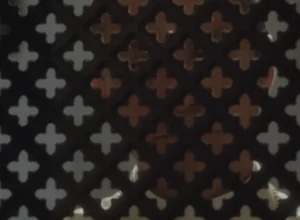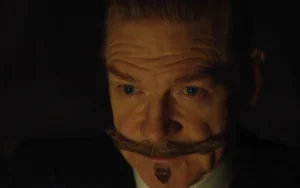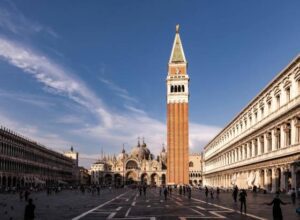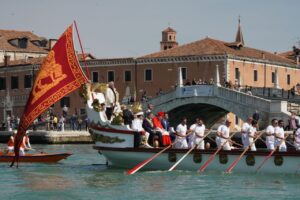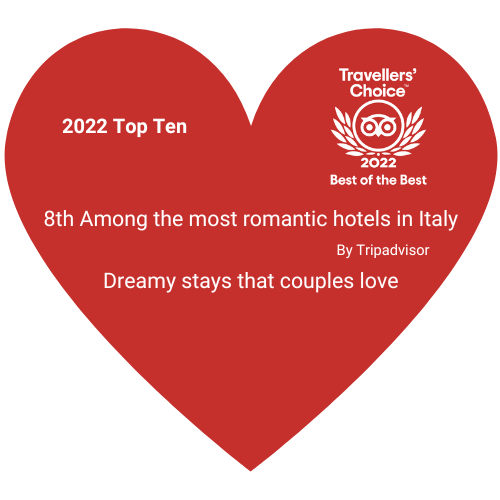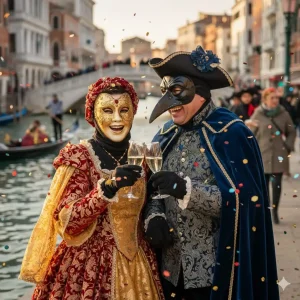
The Venice Carnival is always an extraordinary event, but the 2026 edition promises an even more enchanting atmosphere thanks to the theme “Olympus – At the origins of the game”, a journey through myth, art, spectacle and centuries-old Venetian traditions. Soft lights along the canals, the winter mist, the reflections on the water and the silhouettes of the masks all create the perfect setting for a romantic carnival for couples.
If you’re thinking about a romantic getaway during the most magical time of the year, Venice offers the ideal backdrop: elegant, atmospheric and full of surprises at every corner.
A Carnival inspired by myth, beauty and play
The 2026 theme celebrates the power of creativity, the spirit of challenge and the joy of play — elements deeply rooted in Venetian history. Ancient acrobatic human pyramids, the historic rivalries between local factions, popular celebrations and theatrical performances all come back to life in a contemporary way, transforming the city into an open-air stage.
Every part of Venice — its squares, islands, the Arsenale and St. Mark’s area — will host shows, concerts, parades and installations that capture the essence of the city’s festive spirit.
The best moments to enjoy a romantic carnival for couples
Carnival in Venice is a vibrant mix of colours, sounds and emotions. But if you want to savour it at your own pace, with time for intimacy and quiet moments, certain experiences make the celebration even more memorable.
Strolling along quiet canals at sunset
Hidden corners of Cannaregio, the Jewish Ghetto, Fondamenta della Misericordia and the northern waterfront offer a peaceful and atmospheric Venice. Perfect for living a romantic carnival for couples away from the crowds.
Discovering the masks in the early morning light
When the city is still waking up, the masks seem suspended in time. It’s one of the most magical moments for unique photos and unforgettable memories.
Experiencing the night show on the water at the Arsenale
Light, dance and sound blend into a spectacular evening performance — an experience that feels made to be enjoyed together.
A refined aperitif before the evening events
Taking a quiet break in an elegant setting, with a well-crafted drink, sets the perfect mood before diving into the energy of the Carnival nights.
Exploring Venice’s illuminated campi
Live music, small performances and authentic Venetian life create an intimate atmosphere that becomes even more special when shared.
A Carnival dedicated to emotion and beauty
The full 2026 programme will include:
-
acrobatic shows,
-
the Official Grand Ball,
-
allegorical parades,
-
concerts and cultural evenings,
-
performances across the city’s most iconic locations.
Every day brings new opportunities to discover Venice, but it’s in the evening — when the lights shimmer on the canals — that the Carnival becomes a uniquely romantic experience.
Why staying in Venice makes the difference
Staying in the heart of Venice during Carnival means waking up surrounded by its beauty from the very first moment.
The city reveals its most romantic side:
-
warm lights along the canals,
-
cosy cafés filled with inviting scents,
-
reflections of colourful costumes on the water,
-
a slow, elegant rhythm that accompanies the entire celebration.
If your goal is to enjoy a romantic carnival for couples, Venice offers an atmosphere unlike any other.
Choosing the right hotel for your Carnival stay
For a truly romantic Carnival experience, choose a boutique hotel that offers calm, elegance and attention to detail.
A historic salon for breakfast, refined rooms, intimate spaces and warm hospitality turn your stay into a fundamental part of the experience itself.
It’s the perfect way to balance the vibrancy of Carnival with tranquillity and comfort.
